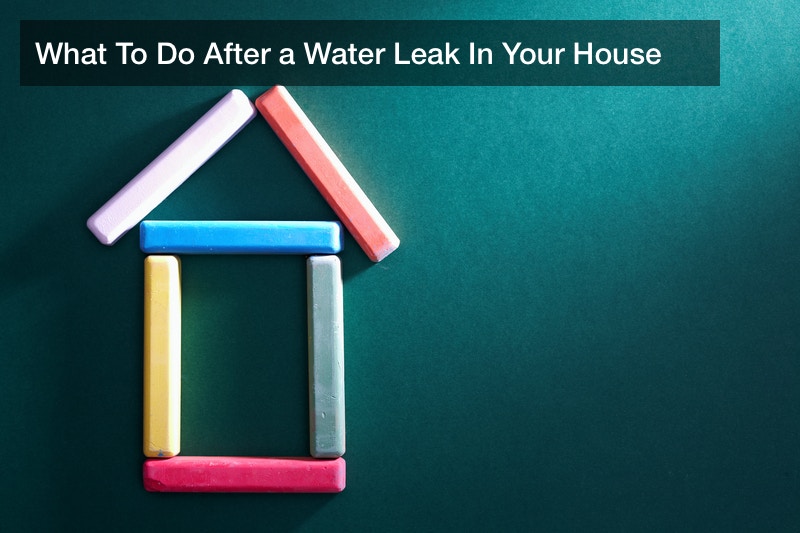
Some plumbing services may look easy but can lead to significant damage if not well handled. This means that you should consider a qualified and experienced professional to help with a bathtub faucet handle repair.
Changing a washer on a kitchen faucet demands the skills of a well-trained plumber. It is not any different from changing o ring in the faucet and changing the tap washer bathroom sink. Plumbing procedures are delicate.
Identifying any plumbing damage is not easy for anyone either. Having a professional plumbing contractor at your service ensures that your plumbing system is in the right state. Reputable plumbing companies and plumbers have the right tools to identify the exact location and severity of the plumbing system in your house or business premises.
The camera inspection technique, for instance, is one of the efficient ways that plumbing contractors use to find out the condition of your plumbing system. Regular maintenance of your plumbing system is essential.
It is with regular inspections and servicing that plumbers identify plumbing issues before they develop into significant plumbing issues. Frequent visits by your plumber prolong the lifespan of your plumbing. On top of this, you can have a plumbing system that functions at its best.

It all starts when you notice a brown spot on your wall or ceiling. Then, you start to notice an odd odor you’ve never had in your house before. Suddenly, you start to notice water pooling around certain areas and spreading around your home. Then, you realize it: you have a water leak in your house.
Water leaks happen from time to time in every house. Roughly 10% of United States households have leaks in their plumbing that can waste up to 90 gallons of water per day. These leaks have the potential to become bigger and cause a large water leak to happen in your home. When you do have a larger water leak, time is of the essence when fixing it. If you’ve never had to deal with a leak before, it can be stressful and overwhelming to deal with. However, if you take it one step at a time, you can get through it. Here’s what to do after a water leak in your house, and how taking the right action at the right time can save you from a lot of headaches.
Step 1: Turn Off Your Water
When thinking about what to do after a water leak in your house, the first thing to do is to shut off the water right away. The less water that leaks, the better, so be proactive about turning off the water as soon as you discover the leak. Find the water valve in your basement and turn the knob clockwise to shut the water off. If you have water that flows to your house via well drilling, the shut-off process may be different so make sure you know how to turn the water off properly.
If you don’t know how to turn the water off, make sure you call someone who does know right away. The longer your water runs, the more damage can be done to your home. Be careful when turning the water valve, too. It could break if you turn it too hard, which means you won’t be able to turn off the water at all. Be quick but intentional when turning off the water during a leak.
Step 2: Shut Off The Electricity
There could be a lot on your mind when thinking about what to do after a water leak in your house. As a precaution, shut off the electricity in your house until the damage has been assessed. You may think the leak only impacts a certain spot in your home, but you never know where that leak could spread. If the water drips into your electric line at all, it could fry your electric or spark a fire.
To prevent this from happening, shut off your electricity right after you shut off the water. Locate your circuit breaker and flip the switch or pull out the fuse box to shut off power to your entire house. Once you identify the source of the leak, you can make a plan for restoring power to your home.
Step 3: Identify The Source of The Leak
The most important step to do when figuring out what to do after a water leak in your house is to identify the source of the leak. This is an essential step to getting the leak fixed as quickly as possible. Look for signs of water damage in rooms that generally use a lot of water, such as the bathroom or kitchen. Examine the floor and walls for dark or wet spots, cracking, bubbling, and puddles of water. The more water damage you notice, the closer you could be to the source.

There could be other areas where the leak could be. For instance, if you have pipes running in your basement there could be a leak you didn’t realize was there. Always check your basement and attic when looking for the source of a water leak. If you don’t, you risk missing the source and damaging your home further. Also, make sure to check the ceiling for signs of water damage. This could indicate that the source is on an upper level of your home.
Once you identify the source, see what caused the source to leak in the first place. Did a pipe burst? Is there a crack in the pipe? Did something become disconnected? This is essential to figure out, as it’ll tell you what the root of the problem is.
Step 4: Evaluate The Damage
As you make your way through your checklist of what to do after a water leak in your house, make sure you take the time to evaluate the damage. Water damage is often obvious, but there could be signs of damage you aren’t aware of. If you notice a foul smell coming from a certain area, brown spots forming along the walls and ceiling, or bubbling along the walls and floors, then you likely have water damage.
You should also evaluate the damage to fixtures and appliances. Check your kitchen appliances to see if any of them short-circuited due to the leak. You should also check your flooring for signs of damage such as swelling and cracking along the boards. If you’re evaluating a basement that has epoxy flooring, look for pooling water and signs of cracking. If you aren’t sure how to evaluate the damage on your own, hire a professional to help you do the assessment.
Don’t forget to check your furniture for damage, either. Water could have dripped down from the ceiling and onto your couches, chairs, kitchen table, or other pieces of furniture. If they are damaged, make sure you record the damage in case your insurance policy covers the replacement of furniture.
Step 5: Talk To An Insurance Agent
The next step in the process is to talk to an insurance agent about the leak. If you have homeowner’s insurance, your policy could cover water leaks and water damage. It may even cover the costs of any emergency plumbing you have to do to fix the leak. To be sure, talk to an insurance agent about your policy so you’re crystal clear on the coverage.

Tell the insurance agent everything that happened during the leak, from where it started to how much was damaged. The agent should be able to pull up your policy and discuss what is and is not covered through your policy. If you don’t have water damage on your policy, you may want to consider adding it on in case a water leak happens again. You don’t want to go through the entire process of fixing up your home just to have a leak happen again and not have it all covered.
Step 6: Contact a Plumber
The next step in going through what to do after a water leak in your house is to contact a plumber. If your pipes are messed up due to the leak, you’ll need plumbing experts to get them fixed. Call a few plumbers in your area and see how they can help you fix your pipes. Some of them may also be able to do backflow tests to make sure your drinking water hasn’t been contaminated.
Be as specific as possible when you’re talking to plumbers about your leak. The more they know about your leak, the better they’ll be able to help fix the issue. Plus, you could save some money by clearly outlining the issue before the plumber comes to your house. The more they know upfront, the less time they have to spend figuring out the issue when they get to your home.
Hiring a plumber is essential when dealing with water leaks. They can fix your issue with one trip and you won’t have to worry about it in the future. If you try to fix the pipes yourself, you could end up making the problem worse. Save yourself the hassle and hire professionals in the plumbing service to do the work.
Step 7: Repair The Damage
As you think about what to do after a water leak in your house, you can’t forget to make arrangements to repair the damage it caused. The water damage may seem cosmetic, but it could be more serious than you think. It may look like a brown spot on the wall, but there could be structural damage to the wooden beams underneath the wall. Contact professionals who can evaluate the damage and help you make a plan to repair it.
Research companies who can do wall repairs, water damage repairs, flood damage restoration, and floor repairs. The more you can get done at once, the better. Don’t procrastinate on getting the damage repaired, either. The damage will only get worse if you wait to get everything repaired. Plus, having a leak or severe water damage in your home can cause a moldy odor to circulate throughout your home. Repair the damage as quickly and efficiently as possible to prevent this from happening.
Step 8: Document Everything
There are a lot of moving parts to keep track of when planning what to do after a water leak in your house. Make sure you keep track of those moving parts by documenting everything. Write down when you first noticed the damage, when you discovered the source, what the source was, and all the damage associated with it.

This documentation is important for a number of reasons. For starters, the plumbers and repair crews will likely ask these questions so it’s important to give them accurate answers. It’s also important for your home insurance company to know this information for policy reasons. And if you ever decide to sell your home, the buyers could ask if there was any previous damage to the property. If document everything properly, you’ll be able to tell them exactly what happened and when it happened. The better you document this leak, the easier it will be to explain why it happened in the future.
Step 9: Clean The Area

One of the most important tips for what to do after a water leak in your house is to clean the areas impacted by the leak. The water leak could cause mold or mildew to form, so be proactive and start cleaning the area when you can. Use the proper cleaning solutions to disinfect the area and scrub out any dirt you see.
If you do notice mold starting to form, call a professional mold removal service. If left to grow on its own, mold can cause health issues such as allergic reactions, shortness of breath, and other severe breathing issues. If toxic mold forms, you could develop even worse reactions. Clean the areas impacted by the leak thoroughly to reduce the chances of mold and mildew forming.
Step 10: Put Preventative Measures In Place
Having a water leak in your house is not something you want to experience twice. That’s why it’s important to put preventative measures in place to make sure something like that doesn’t happen again. Make a pipe and water wellness checklist and use it every couple of months. Evaluate the condition of your pipes, the amount of water you’re using, and how the spots that sustained water damage are looking. The more you check on this, the better chances you have of catching another issue before it gets big.

You can also look into replacing old pipes to prevent a leak from happening again. Leaks can happen if pipes are too old or too rusty, so if you replace them you’ll decrease the chances of a leak happening again. Sealing the leak can temporarily fix the issue, but it won’t do much in terms of prevention.
Home water damage cleanup can be a nightmare to deal with because it always happens at the most inappropriate times, especially when you are on your way to meet up with friends. However, as the saying goes “prevention is always better than cure”, this is the reason why it is always best to know how to avoid it completely. You can detect water leaks in your home before they occur by doing things like ceiling water leak detection, detecting water behind walls, and ask yourself questions like “can a clogged drain cause a leak?”
If you are the kind of person who is skeptical about trying out DIY hacks and would rather call a plumber instead to detect water leaks in your home, then be sure to ask them to show you how to thoroughly do ceiling water leak detection and the best ways for detecting water behind walls before you find yourself swapping your Friday night plans for some good ol’ home water damage cleanup. Besides, getting a professional to teach you how to assess your home will save you from hours of research that might not help you fix that leak, after all.
As you think about what to do after a water leak in your house, remember that while this event is stressful, it will pass. The key is to remain calm, be proactive, and focus on getting everything fixed properly. Take deep breaths throughout the process and remember that it will get fixed. Once it does, focus on making sure it doesn’t happen again so you don’t have to go through it twice. As long as you remain diligent about your plumbing system’s upkeep, you’ll increase your chances of not having to deal with a burst pipe again.
More Topics:
a person who repair taps and pipes, after a flood the first steps, after water, all claims insurance repairs, are plumbers supposed to clean up, basement ceiling repair, bathroom flood clean up, bathroom leak ceiling repair, bathroom water damage repair, burst pipe cleanup, can water damage be repaired, can you fix water damaged wood, ceiling leaking what to do, ceiling water damage repair contractor, clean up water spill, cleaning mold after water damage, cleaning up after a flood, detect water leaks in your home, disinfecting after flood, does home insurance cover ceiling damage, does home insurance cover leaks.








